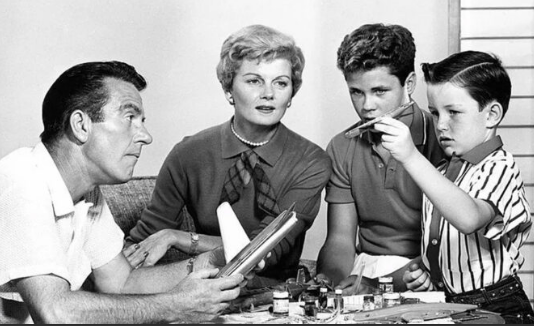
Leave It to Beaver remains one of the most legendary television sitcoms in history. Though it first aired decades ago, its name still resonates—even with those who’ve never watched an episode. But its enduring legacy isn’t just due to its charm or nostalgic appeal. Behind the wholesome family dynamic and suburban idealism were on-screen blunders, behind-the-scenes quirks, and surprising historical milestones that helped shape television as we know it.A defining hallmark of Leave It to Beaver was its portrayal of an idealized family life, setting a gold standard for wholesome television. From 1957 to 1963, the show delivered humor that was both innocent and timeless, making its stories just as relatable and amusing today as they were decades ago. But what makes revisiting the series even more fascinating are the small details and hidden quirks that slipped through the cracks—adding an extra layer of charm for modern viewers.
Take, for instance, the kitchen calendar in June Cleaver’s immaculate home. While the rest of the set was always polished to perfection, the calendar didn’t always keep up. In The Poor Loser (1963), it was still stuck on 1961. Even the props weren’t immune to slip-ups—just look at the baseball game tickets in the same episode, where “Mayfield” is hilariously misspelled as “Mayfied.”
One of the oddest production mishaps occurred in The Silent Treatment. In the episode, Beaver paints a door when a bee suddenly starts buzzing around his face. But if you watch closely, you’ll notice the “bee” is actually dangling from a visible string, bouncing along with every movement.
At the heart of the show was Jerry Mathers, the beloved face of Theodore “Beaver” Cleaver. Now 76, he still gets asked if he was anything like his character. His response? “Well, I got into a lot less trouble.” He fondly recalls the set as a second home, where the cast and crew truly felt like family. Ironically, when he landed the role, Hollywood wasn’t even on his mind—he was just eager to get to his Cub Scouts meeting. That honesty and innocence won over the producers, securing his place in television history.
Wally Cleaver, played by Tony Dow, wasn’t just the stereotypical “older brother”—he embodied the universal struggles of adolescence, making him one of television’s most relatable figures. Interestingly, Paul Sullivan was originally cast in the role, but after a sudden growth spurt made him look too old, Dow stepped in and made Wally his own. His portrayal was so natural and heartfelt that even today, Wally Cleaver is remembered as the perfect big brother.
June Cleaver, played by Barbara Billingsley, was the epitome of the classic 1950s mother—graceful, poised, and always composed. But her signature pearl necklace wasn’t just a fashion choice; she wore it to conceal a small surgical scar on her neck. As her on-screen sons grew taller, she also started wearing high heels more often to maintain a visual sense of authority.
One of the show’s most touching aspects was the real-life friendship between Jerry Mathers and Tony Dow. Their bond extended beyond the screen, mirroring the brotherly relationship they portrayed. In a 2006 interview, Mathers described Dow as the “perfect big brother,” admiring his athleticism, intelligence, and kindness. When Dow passed away in 2022, Mathers expressed his deep sorrow, saying, “He was not only my brother on television. Tony leaves a void in my heart that will never be filled.”
Leave It to Beaver also broke barriers in ways many viewers might not realize. In one episode, Wally is seen carrying a toilet seat—an astonishing sight for 1950s television. At the time, even acknowledging a bathroom’s existence on screen was considered inappropriate, making this a small yet significant step forward in TV history.
Another unique creative decision was the show’s approach to humor. Unlike many sitcoms that relied on exaggerated gags, Leave It to Beaver prioritized authenticity. The creators had a rule—if a joke got too big of a laugh, they’d cut it. They wanted the warmth of the characters and their interactions to be the heart of the humor, not forced punchlines.
Decades later, Leave It to Beaver remains a cherished piece of television history, beloved for its charm, authenticity, and the simple, heartfelt lessons it brought into American homes. Hidden mistakes, behind-the-scenes stories, and groundbreaking moments only add to its legacy, proving that sometimes, imperfection makes a show even more unforgettable.


